Something went wrong!
Hang in there while we get back on track
Best attractions in Mantua
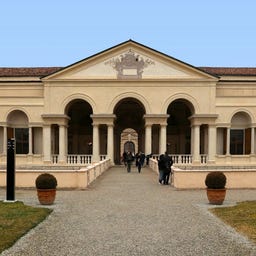
Palazzo Te, a masterpiece of Mannerist architecture designed by Giulio Romano, was built between 1524 and 1534 for Federico II Gonzaga, the Marquess of Mantua, as a palace of leisure. This stunning villa is renowned for its extraordinary frescoes and grand rooms. Highlights include the Sala dei Giganti with its ancient graffiti, where colossal frescoes depict the dramatic fall of the giants, and the Sala di Amore e Psiche, illustrating the mythological love story of Cupid and Psyche.
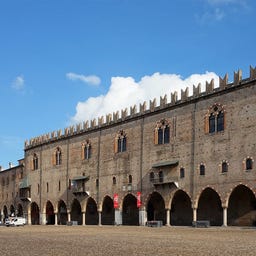
Palazzo Ducale is a magnificent complex where the powerful Gonzaga family resided from the 14th to the 17th century. This sprawling palace boasts around 500 rooms and covers 34,000 square meters, making it the sixth-largest palace in Europe! The highlight of the residence is the Camera degli Sposi, adorned with exquisite frescoes by Andrea Mantegna. Be sure to also see the stunning Cortile della Cavallerizza. Visitors can wander through the inner courtyards and gardens, explore the majestic Castle of San Giorgio, and admire the extensive art collections within the palace

The powerful Basilica di Sant'Andrea dominates the skyline of Mantua as the largest church in the city and impresses with its Roman-inspired triumphal arch façade. Construction began in 1472 based on plans by Leon Battista Alberti and was only completed in 1732 with the finishing of the massive 80-meter-high dome.
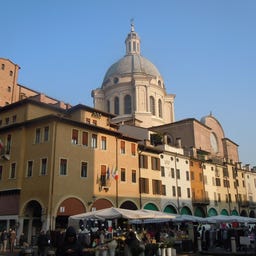
Piazza delle Erbe, situated right in Mantua's historic center, is a lively square. Surrounded by notable landmarks such as the Rotonda di San Lorenzo, the Torre dell'Orologio and the Basilica di Sant'Andrea, the piazza is an important location to explore the town. With its numerous cafes, shops and gelateria, it's the perfect spot to enjoy a leisurely stroll, or simply relax and soak in the bustling atmosphere.
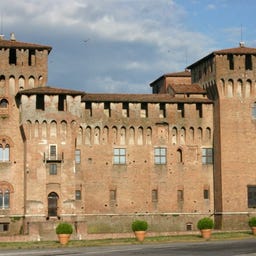
Castello di San Giorgio, part of Mantua's Ducal Palace, is a striking example of late medieval military architecture. Built between 1395 and 1406 for Francesco I Gonzaga, it is the oldest building in the Palazzo Ducale complex. With its four massive corner towers and a moat crossed by three drawbridges, it makes a monumental and well-fortified impression. The castle was transformed from a fortress into a luxurious residence by Ludovico III Gonzaga in the 15th century, becoming a cultural hub under Isabella d'Este, who hosted notable artists like Leonardo da Vinci and Andrea Mantegna. (However, da Vinci refused Isabella's repeated requests to commission a painting.) When Mantua became part of the Austrian Empire in 1814 the fortress became a maximum security prison for the Empire's political opponents.
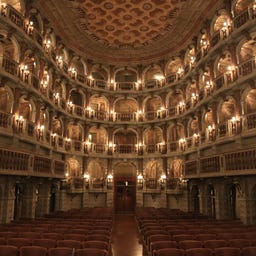
Don't miss this treat if you are in Mantua! Teatro Bibiena, also known as Teatro Scientifico, is a jewel of Baroque architecture, designed by Antonio Galli Bibiena and completed in 1769. Constructed for the Royal Virgilian Academy of Science and Arts, the theatre in Mantua was designed in late Baroque or early Rococo style by Antonio Galli Bibiena. This intimate theater, with about 200 seats encircled by ornate boxes designed for two, is famous for its elliptical shape and intricate decorations. It's not like any theatre you have ever seen before. It even hosted a 14-year-old Wolfgang Amadeus Mozart in 1770. Visitors can enjoy guided tours to explore its elegant box seats and stunning frescoes, and even attend concerts in this historical venue.
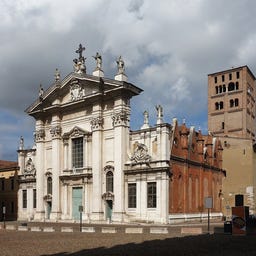
St. Peter's Cathedral, located in Piazza Sordello, is a beautiful example of Mantua’s rich architectural heritage. Destroyed by fire, it was rebuilt in 1395–1401. Today the cathedral features an overlay of three styles: the late Baroque facade, the Gothic left flank, and the Romanesque bell tower. Inside, visitors are greeted by a stunning array of Corinthian columns, leading to a beautifully adorned main altar made of polychrome marble and topped with a finely carved wooden crucifix.
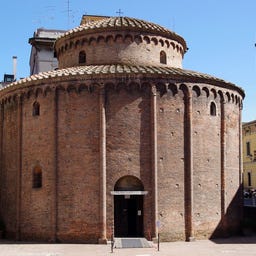
The Rotonda di San Lorenzo, Mantua's most ancient church, dates back to the late 11th century and is a remarkable Romanesque building. Located in Piazza delle Erbe, this circular church stands on the remains of a Roman temple dedicated to Venus. Today it has sunk below the level of the Piazza della Erbe. Its design was inspired by the Church of the Holy Sepulchre in Jerusalem. It features original Byzantine frescoes from the 11th and 12th centuries and a unique matronaeum, a gallery reserved for women. After centuries of neglect, it was restored in the early 20th century, revealing its ancient beauty to visitors once more.
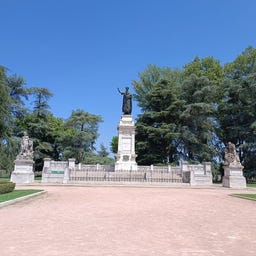
In the heart of Mantua, you'll find the Piazza Virgiliana, a spacious green oasis created in 1797 by the French General de Miollis in honor of the Roman poet Virgil. This park, designed in the French style with its distinctive four rows of trees, was built on the site of a former harbor basin that was filled in during the 18th century.

In the largest historical fire brigade collection in Italy, housed in the former royal stables of the Palazzo Ducale in Mantua, you can expect an impressive journey through the history of firefighting. Founded in the 1990s by Nicola Colangelo, the former commander of the Mantua fire department, the exhibition showcases artifacts from the early 18th century to the present day. From historical uniforms to horse-drawn carriages, steam pumps, and even a helicopter - here you will find lovingly restored and partially still functional witnesses of fire service history. Admission is free, and the gallery regularly opens its doors on weekends and holidays.
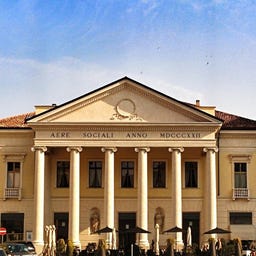
In the historic center of Mantua, you'll find the impressive Teatro Sociale, a neoclassical opera house from the early 19th century. Designed by architect Luigi Canonica, this magnificent building stands out with its characteristic façade featuring an Ionic column portico and a horseshoe-shaped auditorium with five tiers.
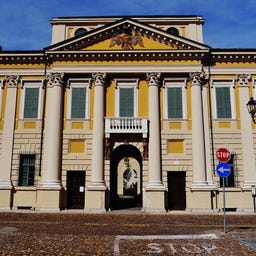
Palazzo D'Arco is an elegant neoclassical palace, redesigned in 1783. It is located on Piazza Carlo D'Arco #4. Inside, you'll find the Museo di Palazzo d'Arco, which showcases the elegant furnishings and impressive artwork collected by the D'Arco family. Despite being bombed during World War II, the palace retains its charm. The highlight of a visit is the Sala dello Zodiaco, a room adorned with beautiful frescoes by Giovanni Maria Falconetto.
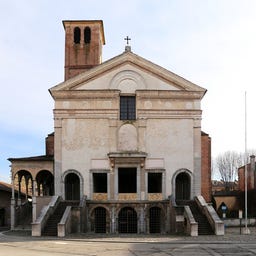
The church of San Sebastiano (or temple of the Fallen) is an early Renaissance gem in Mantua, and was designed by the renowned architect Leon Battista Alberti. Construction began in 1460 but was left incomplete by the mid-1470s, leaving little of Alberti’s work beyond his innovative design. Notably, the church features a Greek cross plan and a façade without columns, marking a significant shift in architectural style. Considered one of the earliest examples of Renaissance centrally-planned churches, it was originally intended as a mausoleum for the Gonzaga family and includes a ground-level crypt. Today the temple is used as a 'famedia' of the Fallen.
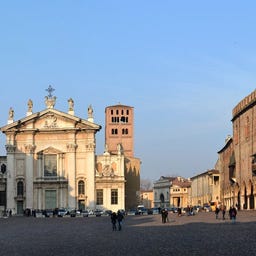
Piazza Sordello, dedicated to the medieval troubadour Sordello da Goito, is the heart of Mantua. Built in 1330, this medieval square is home to the Cathedral of San Pietro and the 13th-century Palazzo Bonacolsi. Visitors can also explore remnants of an imperial Roman villa's mosaic floors. The oldest square of the town is also a lively spot with frequent cultural events.
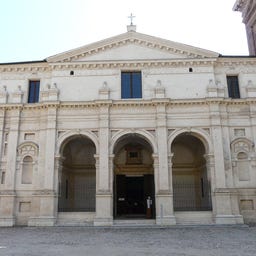
The Basilica Palatina di Santa Barbara was commissioned by Duke Guglielmo Gonzaga and designed by Giovan Battista Bertani. Built between 1562 and 1572, this Renaissance gem features a unique square dome and houses a remarkable 16th-century organ by Graziadio Antegnati. Adorned with exquisite frescoes, the basilica offers visitors a glimpse into the opulent religious life of the Gonzaga family.
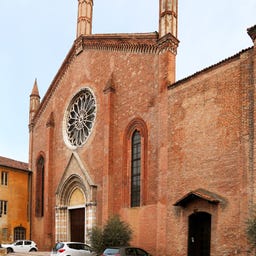
The Church of San Francesco in Mantua, founded by the Franciscan Order in 1304, is a historic gem with a tumultuous past. From 1811, it was used as an arsenal by the Austrians. In 1942, the Franciscans returned to the monastery and reopened the church for services. Though repurposed and damaged over the centuries, including during World War II, it still showcases its Romanesque and Gothic architecture. The church features preserved frescoes, such as those depicting St. Francis receiving the stigmata, and houses the Cappella Gonzaga, known for its beautiful frescoes of St. Louis of Toulouse.

On Via Pescherie in Mantua stands the historic Pescherie di Giulio Romano, a distinctive building from the 16th century designed by the star architect Giulio Romano as a fish market in 1536. The striking facade features two arched arcades and rectangular windows framed by pilasters on the upper floor.
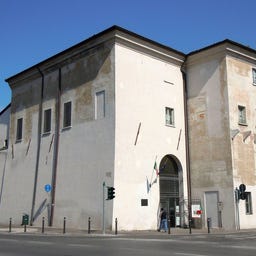
In the magnificent Palazzo San Sebastiano, built between 1506 and 1512 as the residence of Marquess Francesco II Gonzaga, you will discover a fascinating city museum with four thematic exhibition paths. The palace, constructed in the 16th century, where Gonzaga passed away in 1519, has had a tumultuous history as a military barracks and hospital before being reopened as a museum in 2005 after extensive restoration.
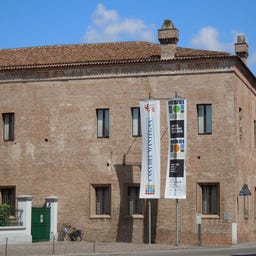
In this harmoniously proportioned city palace from the 15th century, the famous Renaissance artist Andrea Mantegna lived and worked. He received the building as a reward for his work on the Camera degli Sposi from the Gonzaga family.
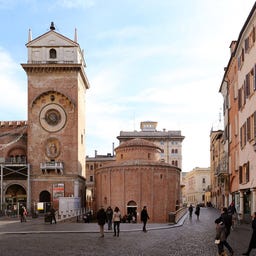
The Torre dell'Orologio, built in the 15th century, is a nice landmark at the Piazza delle Erbe. This Renaissance tower houses an intricate astronomical clock designed by Bartolomeo Manfredi, displaying not just time but also lunar phases and zodiac positions. Inside the connected Palazzo della Ragione, visitors can explore exhibitions on the clock's history and mechanism, and enjoy panoramic views of the city from the top.
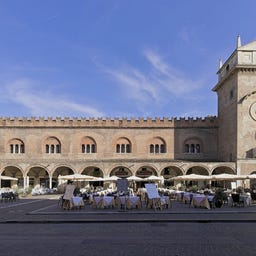
The Palazzo della Ragione, built between 1242 and 1250, served as Mantua’s city hall, courthouse, and market hall. This historical gem features a beautiful astronomical clock tower added in the 15th century, which once guided the daily lives of Mantua's citizens. Visitors can explore the vast main hall, which now hosts exhibitions, and enjoy panoramic views at the clock tower.
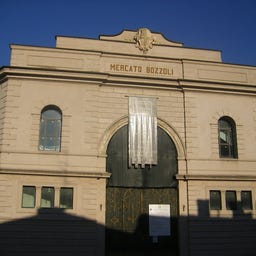
In the National Archaeological Museum of Mantua, housed in the historic Palazzo Ducale, you can embark on a fascinating journey through time from the Neolithic period to the Renaissance. The building, which served as a theater for the Gonzaga from the 16th to the 19th century and later as a silkworm market, impresses with its distinctive late 19th-century paleo-industrial architecture featuring striking rows of columns.
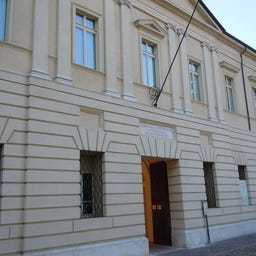
In the former Augustinian Monastery of Sant'Agnese, you will find one of the most significant collections of sacred art in Northern Italy, which has been accessible to the public as a permanent museum since 1983. The institution, named after the Franciscan monk and bishop Francesco Gonzaga, houses precious art treasures from the Cathedral and the Basilica Palatina di Santa Barbara, as well as private collections.
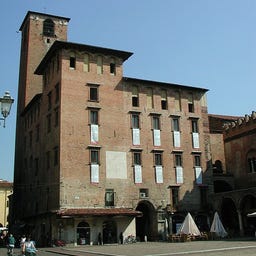
Situated between Piazza Broletto and Piazza delle Erbe, the Palazzo del Podestà (or Palazzo del Broletto) is an architectural gem dating back to the 13th century. Originally built as the commune's government offices, it features a Renaissance-style facade. Look closely: in a niche with a well-worn13th-statue depicts Virgil at his desk.
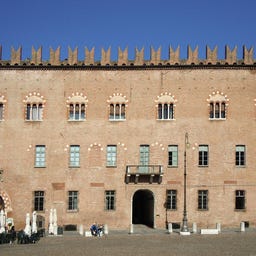
The impressive Palazzo Bonacolsi at the central Piazza Sordello was built in the late 13th century by Pinamonte dei Bonacolsi as a power center for his influential family. With its characteristic battlements and complete brick facade, it still reflects the tumultuous history of Mantua, where the Bonacolsi ruled until their downfall by the Gonzaga in 1328.

Casa di Rigoletto, located at Piazza Sordello 23, is a historic building famously depicted in the original set design of Giuseppe Verdi's opera "Rigoletto". This medieval house, updated in the 15th century, was chosen in 1851 to represent the home of the fictional jester Rigoletto. In the garden, visitors can find a bronze statue of Rigoletto, created by sculptor Aldo Falchi in 1978. Today, the house serves as a tourist office
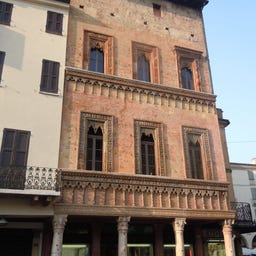
At the corner of Piazza delle Erbe, the magnificent Casa del Mercante stands, a Venetian-inspired city palace from the 15th century. The wealthy cloth merchant Giovanni Boniforte da Concorezzo, a court supplier for the Gonzaga family, had the three-story building constructed in 1455 and originally adorned the facade with golden leaf.
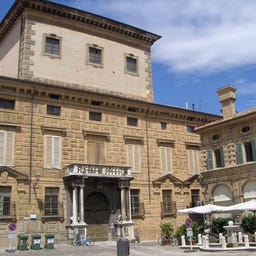
The magnificent Palazzo Canossa has been standing since the 17th century at Piazza Matilde di Canossa and is one of the most significant Baroque buildings in Mantova. Built by Marquis Orazio Canossa between 1659 and 1673, the palace impresses with its façade adorned with stucco reliefs and an imposing entrance featuring marble columns and the family crest with a dog.

The late Gothic Chiesa di Santa Maria della Vittoria in Mantua commemorates a historical triumph: Margrave Francesco Gonzaga had it built in 1496 to honor the victory of the League of Venice against Charles VIII of France.
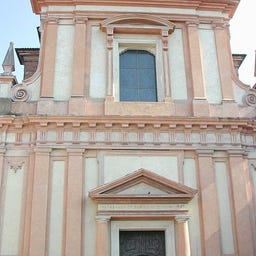
The Chiesa di San Barnaba in Mantua has a rich history that dates back to 1263. In the 14th century, it was handed over to the Servi di Maria and received its current façade in the 18th century, designed by Antonio Bibiena.
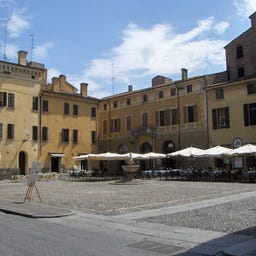
In the heart of Mantua's historic center, you discover Piazza Broletto, a place rich in history situated between Piazza Sordello and Piazza delle Erbe. Dominating the square is the Palazzo Broletto, built in the 13th century by Laudarengo Martinengo, which once served as the vibrant center of public life in the city.
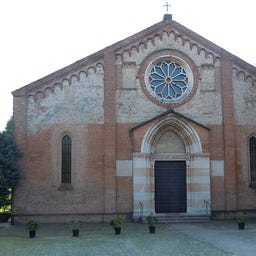
The Chiesa di Santa Maria del Gradaro in Mantua combines Romanesque-Gothic architecture with a rich history that dates back to the 13th century. According to legend, it was on this site that Saint Longinus suffered his martyrdom, and in 1256, the canons of San Marco began constructing the church, which gets its name from the Latin word "cretarium," referring to the clay-rich soil.
In the southern part of Mantova, you will find the Bosco Virgiliano, a 5-hectare city park established in 1930 in honor of the Roman poet Virgil. Designed by architect Giuseppe Roda, the park is beautifully situated between the Valletta Valsecchi and the Mincio River, not far from Virgil's birthplace, Pietole Vecchia.
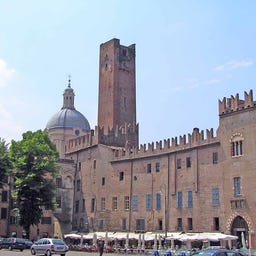
The Torre della Gabbia, a medieval tower in Mantua, stands at 55 meters tall and was originally built by the Acerbi family. It was later sold to Pinamonte Bonacolsi in 1281 and eventually integrated into the Guerrieri Gonzaga palace. The tower got its current name in 1576 when Duke Guglielmo Gonzaga installed an iron cage built as an "open-air prison" to publicly display prisoners. Famous is a thief named Marchino Ziganti who was caged there for three months.
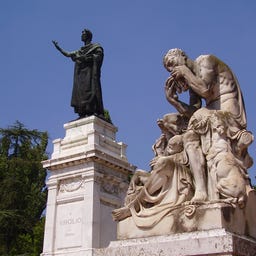
In the Piazza Virgiliana of Mantua stands the impressive monument dedicated to the Roman poet Virgil - a bronze statue on a pedestal made of Carrara marble, designed by Luca Beltrami and created by sculptor Emilio Quadrelli.
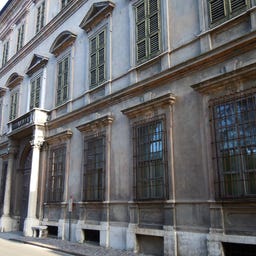
In the heart of Mantua, you will find the magnificent Palazzo Cavriani, an impressive city palace with 140 rooms spread over 12,000 square meters. Originally owned by the Gonzaga family, the palace was extensively redesigned between 1736 and 1756 by architect Alfonso Torreggiani on behalf of Marquis Antonio Cavriani.

In the impressive Palazzo Te, a masterpiece by architect Giulio Romano from the 16th century, you can discover the municipal museum of Mantua today. The magnificent palace, built between 1524 and 1534 for Duke Federico II Gonzaga, houses an impressive permanent exhibition of the city's collections in its upper rooms.
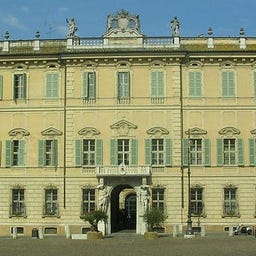
Right next to the Duomo of Mantua stands the magnificent Palazzo Bianchi, which has served as the bishop's residence and the seat of the curia since 1824. Built in the 18th century to replace two older buildings, the palace was completed in 1765 with an impressive staircase and elaborate ceiling frescoes by Giuseppe Bazzani.
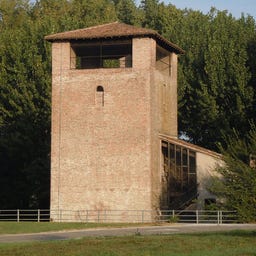
The medieval Rocca di Sparafucile stands as the last remnant of the once fortified village of San Giorgio at the eastern entrance to the city of Mantua. The defensive tower, built in the late 14th century under Ludovico I Gonzaga, originally served to protect the San Giorgio Bridge and was extensively renovated in the 15th century.
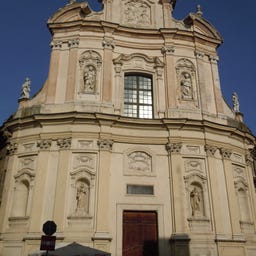
The Chiesa di San Maurizio in Mantua is an impressive Baroque building from the early 17th century, adorned with four striking limestone statues on its façade. The church, which was started in 1609 by Antonio Maria Viani and opened in 1616, houses significant artworks, including paintings by Ludovico Carracci and Jacob Denys.
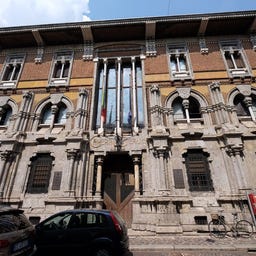
In the heart of Mantova stands the Palazzo Andreani, a fascinating building from the early 20th century that combines various architectural styles from Liberty to Neo-Gothic. Designed by Aldo Andreani, the palace was originally opened as the Palazzo della Borsa and reflects the rising ambitions of the local craftsmanship and industry of its time.

On the Piazza Castello, one of the most significant squares in the historic center of Mantua, you stroll today through a car-free zone with beautifully frescoed arcades on three sides. Designed in the 16th century by Giovan Battista Bertani, the square was once known as Prato di Castello and directly borders the historic residence of the Gonzaga family.
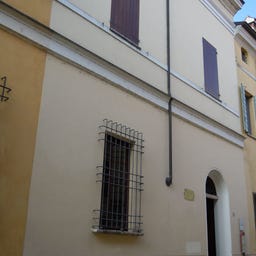
In the Norsa-Torrazzo Synagogue, one of the last remnants of the former Jewish ghetto in Mantua, you will find one of the best-preserved synagogues in Northern Italy. The magnificent prayer hall from the 18th century impresses with its intricate stuccos, Hebrew Bible quotes, and finely crafted wooden elements, while wrought-iron chandeliers hang from the ceiling.
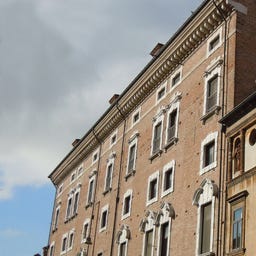
In the heart of Mantua, you will find the Palazzo Valenti Gonzaga, an impressive Baroque building from the 16th century that was home to the noble family of the same name. The Flemish architect Frans Geffels oversaw a major renovation of the palace in 1670, during which he also created the magnificent frescoes that you can still admire today.
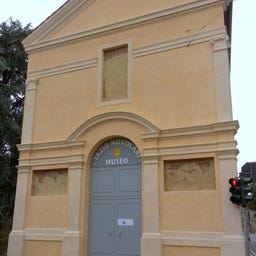
In the former Carmelino Church, you will find a museum dedicated to two legendary athletes from Mantua: the race car driver Tazio Nuvolari (1892-1953) and the cyclist Learco Guerra (1902-1963). Opened in 1985 and managed by the Automobile Club Mantua, the museum particularly highlights the career of Nuvolari, who is considered one of the greatest race car drivers of all time.
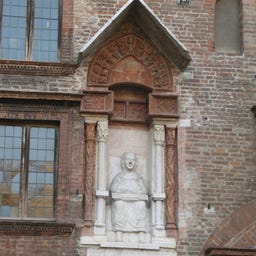
Next to the Palazzo del Podestà in Mantua, you will find a remarkable statue from the early 13th century depicting the Roman poet Virgil as a scholar. The medieval sculpture, framed by two marble columns in a niche, shows the poet with a doctoral cap and a writing desk on his knees. Below, you can discover the Latin inscription "Virgilius Mantuanus poetarum clarissimus," while the locals affectionately refer to the artwork as "la vecia" (the old woman).
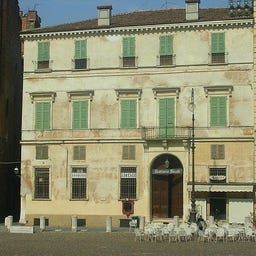
At the Piazza Sordello, between the Palazzo Bonacolsi and the Palazzo Vescovile, you will discover the Ca' degli Uberti, an impressive city palace from the 13th and 14th centuries. Built in the late Gothic style, this building originally served as a noble residence for the Uberti, a Florentine noble family that settled in Mantua in the early 14th century.
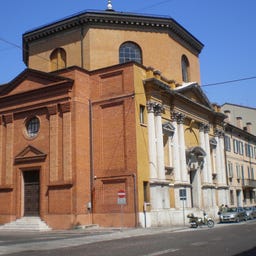
The octagonal Chiesa di Sant'Orsola was built in 1608 by Antonio Maria Viani on behalf of the widowed Margherita Gonzaga and was completed just four years later. The church was part of a larger convent complex for noble ladies, where the patroness herself also resided in an apartment.

In the Giardini di Belfiore, there stands an impressive monument made of white Carrara marble, dedicated to the martyrs of the Italian Risorgimento. Created by sculptor Pasquale Miglioretti, this monumental structure features an intricately designed sarcophagus adorned with relief medallions of the martyrs, topped by the allegorical statue of the "Genio dell'Umanità."
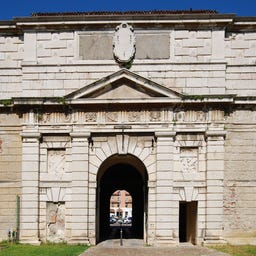
As the only surviving city gate from the Renaissance fortifications of Mantua, the Porta Giulia impresses with its Roman-inspired triumphal arch architecture. Built in the early 16th century, the gate was part of the Cittadella di Porto, a pentagonal fortress designed to protect the strategically important Ponte dei Mulini.

The Porta Pradella, also known as the Porta Belfiore, was once an important part of Mantova's fortifications, with a history dating back to the 13th century. Originally built in 1242 as the Porta dell'Acquadrucio, it was renamed in the early 16th century and was reconstructed in the neoclassical style between 1847 and 1850 according to plans by Giovanni Cherubini. This impressive structure, with its four Doric half-columns and central archway, once led to a drawbridge. In 1940, the gate was demolished as part of a traffic redesign - today, you won't find any remnants of this historic site.
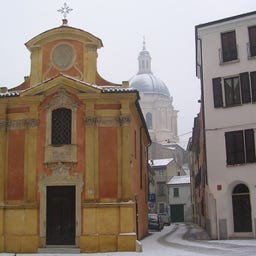
The small Baroque church at the charming Piazza Canossa serves as a reminder of the great earthquake of 1693, during which, according to tradition, the Madonna is said to have protected the city. The sacred building, constructed in 1754, impresses with its simple nave and the altar area separated by a grille.
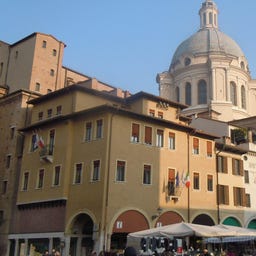
In the heart of Mantua stands the Casa della Cervetta, a historic building with a rich history, named after the small deer emblem - a symbol of loyalty to the powerful Gonzaga family.
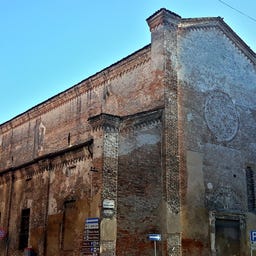
On the edge of the historic old town of Mantua, you will discover the Chiesa di San Cristoforo, a former monastery church of the Celestines, which was supported by Paola Malatesta, the wife of the Marquess of Mantua.
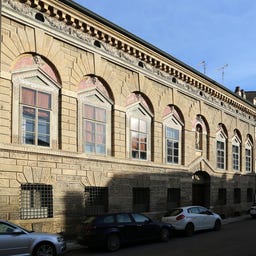
Casa di Giulio Romano in Mantua is an architectural gem designed by the renowned Renaissance artist himself in 1544. This unique residence reflects Giulio Romano’s personal style, featuring a striking facade with intricate stonework and distinctive arches. Inside, visitors can admire frescoes and original elements that showcase the artist’s ingenuity and creativity.
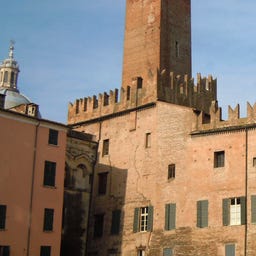
"Palazzo Acerbi" is a historic palace in Mantua and is located in Piazza Sordello. [https://www.google.it/books/edition/Mantova_e_provincia/EYz7qJ4ewbgC?hl=it&gbpv=1&dq=palazzo+acerbi+mantova&pg=PA37&printsec=frontcover Touring Club Italiano. Mantova e Provincia.]


The "Gonzaga Chapel," located within the Church of San Francesco in Mantua, was built at the behest of the Gonzaga family and was intended to serve as the family's pantheon. It was used by the early members of the dynasty, from the 14th century to the end of the 15th century.

The "Palazzo del Mago" is a historic building in Mantua, located at Piazza San Leonardo, 1.
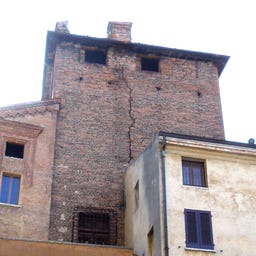
The "Torre del Salaro" or also "Torre del Sale" is a family tower in the northern Italian city of Mantua in Lombardy. It is located in the old town of Mantua, surrounded by several houses at Piazza Andrea Mantegna, in close proximity to Piazza delle Erbe. On the northeast side of the tower, the Casa del Mercante leans against it.
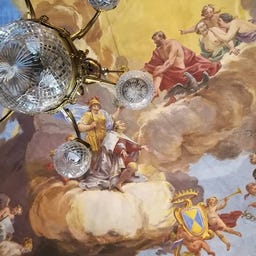
"Palazzo Guidi di Bagno" is a historic building in the center of Mantua.

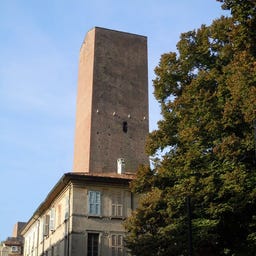
Right next to the magnificent Palazzo Ducale in Mantua, the Torre degli Zuccaro rises into the sky - a medieval watchtower from the 12th century, known to locals as "Tor dal Sücar" (Sugar Tower).

"Piazza Canossa" is one of the squares in the historic center of Mantua.
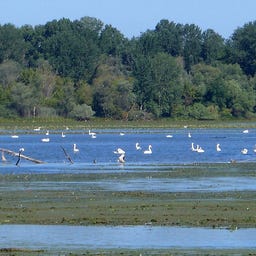
The "Vallazza Nature Reserve" is a protected natural area in the Lombardy region established in 1991. It consists of a vast wetland area of about 6 km along the Mincio River, covering an area of 537.50 ha. Source: Ministry of the Environment and Protection of Land and Sea, [http://www.minambiente.it/opencms/export/sites/default/archivio/allegati/vari/elenco_ap_2003.pdf Official list of protected areas] 5th Update approved by the Conference of State Regions on July 24, 2003, and published in the Ordinary Supplement No. 144 to the Official Gazette No. 205 of September 4, 2003, in the province of Mantova, within the Mincio Park.
The "Palazzo del Massaro" is a historic building in Mantua, located in Piazza Broletto.
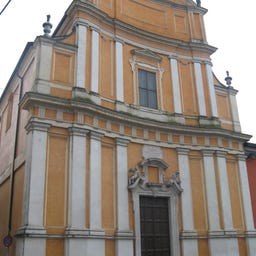
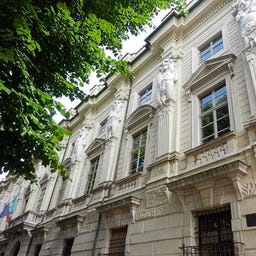
"Palazzo Colloredo" is a historic building in Mantua, located at via Carlo Poma, 9.
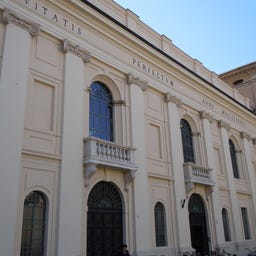
The "Palazzo dell'Accademia Nazionale Virgiliana" is a historic building in the center of Mantua.
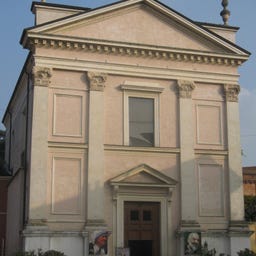
The "Church of San Leonardo Abate" is one of the oldest churches in the city of Mantua. It overlooks the square of the same name within the ancient district of Corno, so named for the shape it took as it merged into the Lake of Mezzo; the current name of the district is derived from the church itself.
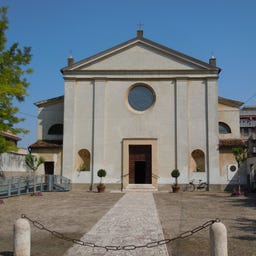
The "Church of Santo Spirito" is one of the churches in the city of Mantua.
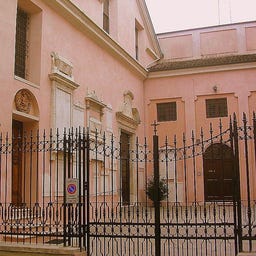
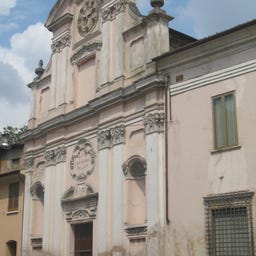
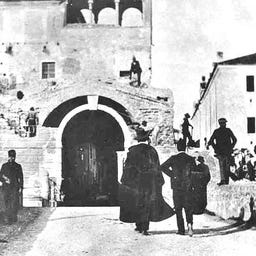
"Porta Pusterla" was one of the gates of the city of Mantua.
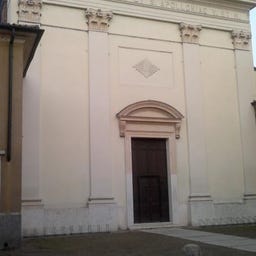
The "Church of Saint Apollonia Virgin and Martyr" was built in the 12th century and was originally dedicated to Santa Maria in Betlem, later acquiring its current name in an unknown period. Over the centuries, it underwent several renovations until the last radical intervention at the end of the 18th century, entrusted to the architect Paolo Pozzo. The facade from 1834 is in neoclassical style.
The "Church of Santa Caterina" is a religious building in Mantua, located at Corso Garibaldi, 74.
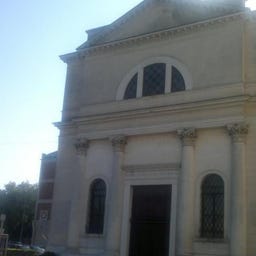
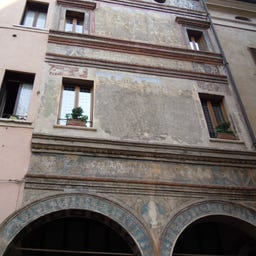
"Casa del mercato" is a historic building located in Piazza Marconi in Mantova, formerly known as Piazza Purgo, and adorned with an important cycle of Renaissance frescoes attributed to Andrea Mantegna. [http://www.giovannipasetti.it/asito/m23.htm Andrea Mantegna. New Discoveries]
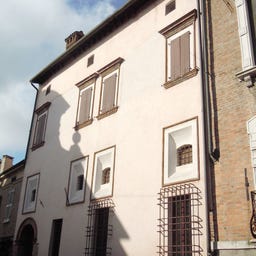
The "House of Blessed Osanna Andreasi" is a historic palace in Mantua, located at via Pietro Frattini 9.
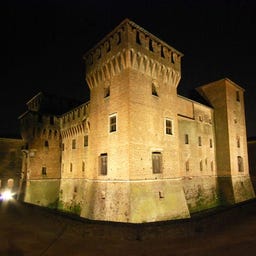
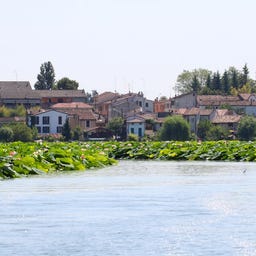
The "Certosa Monastery" was a religious building in Castelnuovo Angeli, a district of Mantova. It was a Carthusian monastery from 1408 to 1782 and was subsequently demolished by the Austrians.

The "Bonacolsi Chapel" is a chapel in the historic center of Mantua at Piazza Sordella.

"Palazzo Arrivabene" is a Renaissance building located in the historic center of Mantua, home for centuries to the family of the same name. It gradually expanded to include a large part of Via Fratelli Bandiera and the street of the same name, Via Arrivabene.
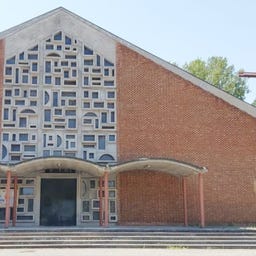
The "Church of San Luigi Gonzaga" is a religious building located in the city of Mantua, in the province of Mantua, in the Te Brunetti district.

The Voltone di San Pietro is an impressive stone and brick archway in the historic center of Mantua, built in the 16th century by architect Giovan Battista Bertani. Originally, it was one of three city gates in the first city wall and was referred to as the "Porta di San Pietro" until the end of the 13th century.
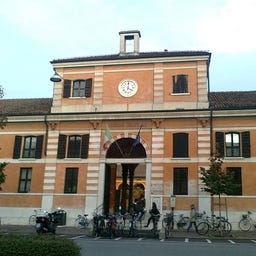
The "Gino Baratta Media Library" is a public library located in Mantua on Corso Garibaldi.
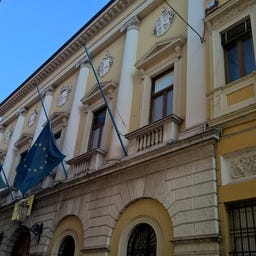
The "Municipal Palace" is a historic building in Mantua, located at via Roma 39.

In the Chiesa di Santa Paola, you encounter a remarkable testament to the Gonzaga dynasty in the heart of Mantua. The church, built between 1416 and 1460 by Paola Malatesta, the wife of Gianfrancesco Gonzaga, was designed by the renowned architect Luca Fancelli.
The "Church of Santa Teresa" is one of the churches in the city of Mantua.

The "Torre di Sant'Alò" is a historic building in Mantua and is located in Piazza Arche.
